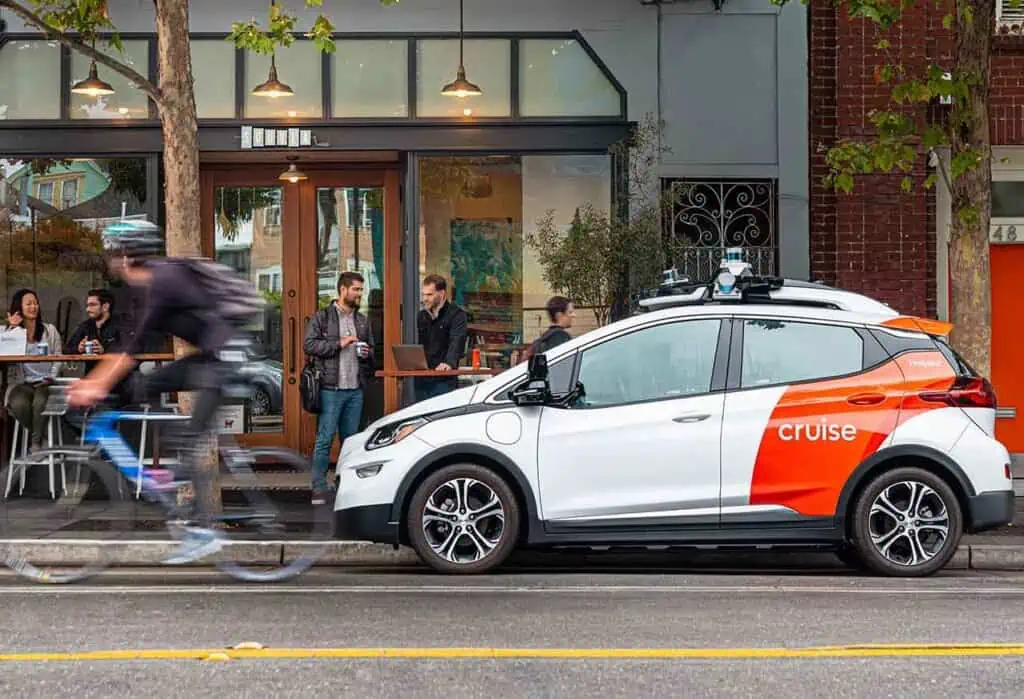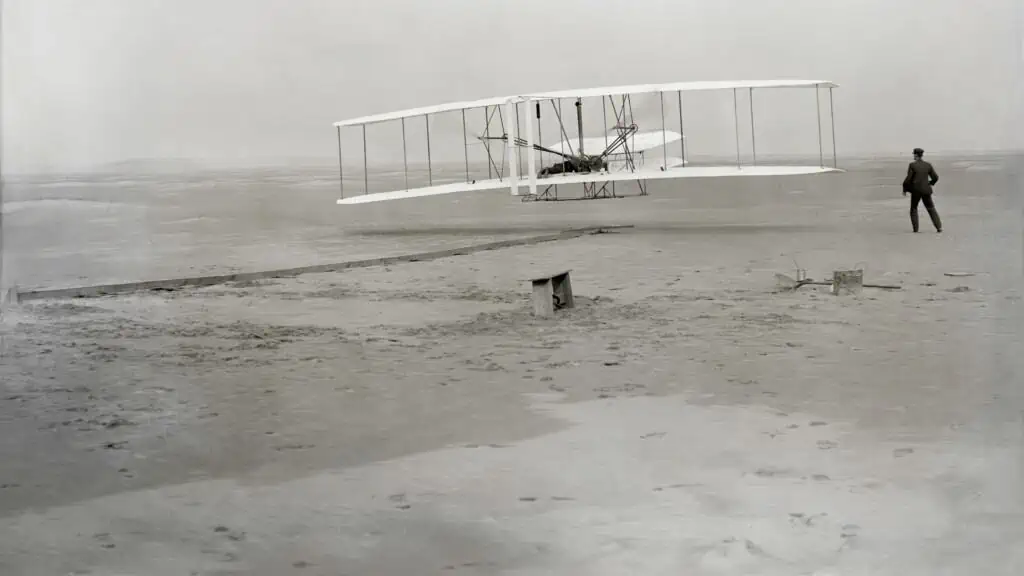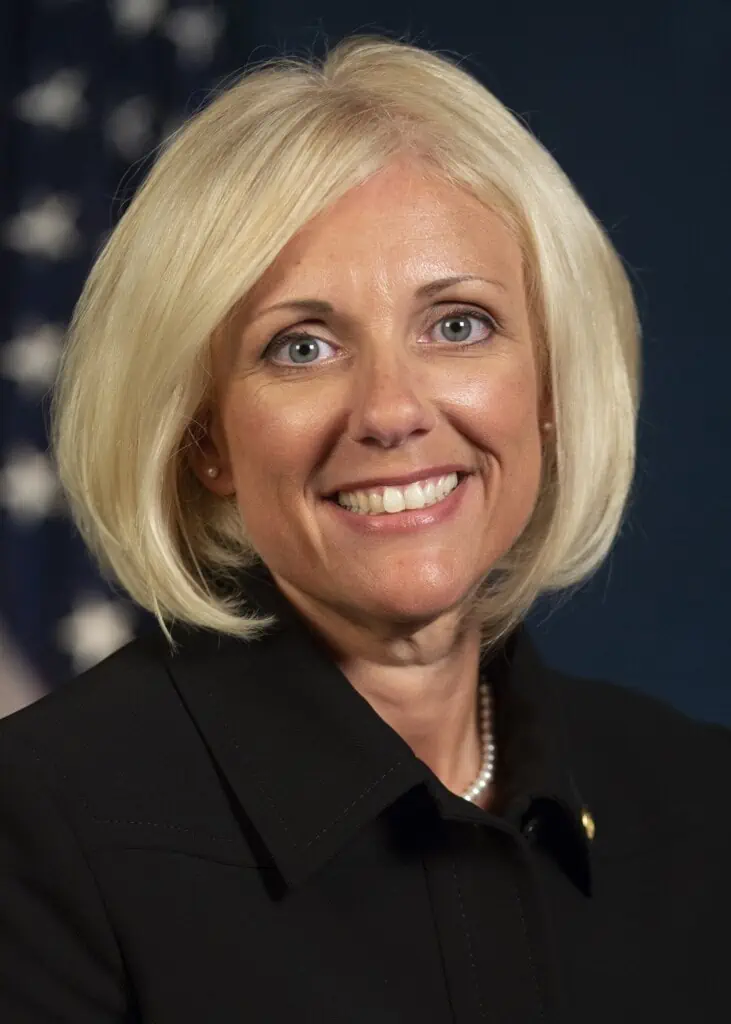
(Image: Cruise)
By Colin Barnden
What’s at stake?
With no formal oversight and a lack of accountability, AV companies set their own agendas for safety, trust, and transparency, which detracts from the goal of making public roads safer. Like aviation, society will benefit greatly from federal regulation of the AV industry.

The original flying machine took to the skies on December 17, 1903, at Kitty Hawk in North Carolina, U.S. The Wright Flyer – named after, invented, and flown by Orville and Wilbur Wright – traveled about 850 feet on its fourth and final flight.
It was damaged on landing, and minutes later blown over by the wind and wrecked. The original Wright Flyer never took off again, but so started a relationship between powered flight and safety.
In the century or so since the Wright Brothers’ first flight, ties between the aviation industry and safety best-practices have grown ever stronger, resulting in flying becoming steadily safer.
Established in 1967 and becoming independent in 1975, the National Transportation Safety Board (NTSB) is a federal agency charged by Congress with investigating every civil aviation accident in the U.S. NTSB is currently chaired by the venerable Jennifer Homendy, a passionate safety advocate and compelling public speaker. Since inception NTSB has investigated over 137,000 aviation incidents.
In aviation, no one competes on safety. Any company that claims “Safety is our North Star,” doesn’t care about safety.
But who in the U.S. auto industry cares about safety? If road safety truly mattered, General Motors’ Hummer EV would not be sold to the traveling public. No one needs to own a vehicle that big and heavy for private use.
If safety was the auto industry’s North Star, no privately-owned passenger vehicle in the U.S. would be capable of being driven at 200mph, nor of accelerating from zero to 60mph in under two seconds. Automakers wouldn’t compete on top speeds and rates of acceleration that are dangerous to humans both inside and outside of road-going vehicles.
If safety on public roads was a priority, federal policy would dictate persistent speeders and drunk drivers be permanently removed from the driving pool. Dangerous and distracted driving would have a meaningful punishment that changed behavior, and politicians would vehemently advocate responsibility behind the wheel. The message: Ignore the laws of the road, lose your licence.
But safety on U.S. public roads isn’t a government priority.
Double standards
Cars and trucks are in many ways an unsubtle proxy for the male appendage: The bigger, the better. Big sells; powerful sells; uncontrollable is attractive. Dangerous bad boys speed and drive drunk, only wussy wimps obey the laws of the road – and they go home alone. Thus, vehicle ownership has a complicated relationship with human behavior.
Motor vehicles fulfill another basic human need: Freedom. Private vehicle ownership gave to the masses the ability to travel pretty much anywhere at any time. So popular has vehicle ownership become that ever more space has been given over to public roads and vehicle parking lots. In much of the U.S., private motor vehicles dominate roads at the expense of almost all other forms of transit.
Ironically such popularity has made driving so torturous that for many the experience has become decidedly un-racy and unglamorous. Much the same is true of modern commercial aviation, which is a far cry from the 1960’s stereotypes of handsome, dashing pilots and sexy, single stewardesses.
1903 saw both the inaugural flight by the Wright Brothers and the launch of the Ford Model A. In the century or so since, the aviation and auto industries have become standard features of life in the U.S.
But why are the safety records of those industries so different? Since 2009 there have cumulatively been fewer than ten fatalities in the U.S. commercial aviation sector, compared with almost 43,000 deaths recorded on U.S. roads in 2022 alone.
Success in reducing U.S. aviation fatalities is both the result of formal regulation – the Federal Aviation Administration was founded in 1958 – and of the NTSB’s mission to investigate all commercial airline deaths in the U.S. and report back on lessons learned.
The aviation industry has an outstanding safety record because airlines take seriously the accident investigation reports and safety recommendations from NTSB. In aviation, NTSB doesn’t promote safety. NTSB is safety.
But that isn’t the whole story. There also exists in the traveling public an anathema to aviation deaths that has no comparison to road deaths. Rightly or wrongly, people react very differently to news of planes crashing than to news of cars crashing.
The result is that safety has been stitched into the DNA of the aviation industry over several decades, in a way that it hasn’t in automotive.
Quite simply, the U.S. consumer demands higher safety standards in the air than on public roads and from those double standards, the AV tech bros saw the opportunity of a lifetime.
Saying lies
Almost anything can be done with statistics. For instance, “the average person has one breast and one testicle,” is a statement statistically valid while being anatomically stupid. It accurately describes practically nobody, and no body.
The same is true of statistics of an “average human driver,” which is calculated by dividing vehicle miles traveled by the number of road deaths. The 2022 fatality rate was estimated at 1.35 fatalities per 100 million vehicle miles, or one death per roughly 74 million miles of driving.

But what does that number mean? It doesn’t tell us if the problem is deaths inside or outside vehicles. It tells us nothing about vehicle ages or their road worthiness; nada about speeds, road conditions, time of day, weather, nor the ages or driving experience of those who died.
An average of one death per roughly 74 million miles of driving doesn’t tell us anything especially meaningful. In the absence of anything to compare it to, we don’t even know if the number is good or bad. Better than goldfish? Worse than moose?
However, it is catnip to an AV industry seeking to reinforce the failings of humans as drivers, thus giving them justification to “save lives” by operating their tech on public roads.
Nowhere is this duplicitousness more evident than in the oft-cited claim of “94 percent human error.” As NTSB’s Homendy observes: “It ain’t 94 percent.”
The official statistic said “94 percent driver error,” and came with a long list of caveats and conditions. Phil Koopman, assistant professor at Carnegie Mellon University, explains further:
By blaming human for all road deaths, an AV developer can legitimately claim their robo-driver to be safer than humans because AVs aren’t human, ergo don’t make human errors.
Let’s watch how easy and convincing this is, in an interview with Kyle Vogt, ex-CEO of GM Cruise:
With the AV tech bros saying lies about saving lives, politicians and lawmakers simply froze like deer in the headlights, too terrified to push back.
But where is the political courage to make roads safer by banning speeding, dangerous, drunk, and drugged drivers from driving altogether?
Why do politicians stand aside as AV companies gaslight that “humans are terrible drivers,” while doing so little to make laws to advance technology that would make human drivers safer?
Why is driver monitoring to mitigate distracted and drowsy driving not already a mandatory requirement in all vehicles with four or more wheels sold in the U.S.?
Why is advanced automatic emergency braking, which is effective at night and can detect pedestrians, wheelchair users, bicyclists and motorcyclists also not already mandatory?
The answers are simple. The billion-dollar-funded AV tech companies have used every lawyer, lobbyist, and PR trick in the book to frame the debate about road safety to include only their technology to replace humans as drivers.
Far from saving lives, the efforts of AV companies to fix outcomes to benefit themselves actively hinders progress to make public roads safer.
Democratizing mobility
Self-driving technology, such as robotaxis, offers one immeasurable benefit to society. It creates the possibilities of affordable and reliable mobility solutions to disadvantaged communities and disabled citizens.
Many representatives of these groups are powerful advocates for robotaxi deployment and their voices have extraordinary political influence.
Lessons learned in the early days of aviation once again act as a guide for AV safety.
As they first took to the skies at Kitty Hawk, the Wright Brothers were focused on not dying and not harming anyone. Staying alive was their North Star, not democratizing cheap flights to Cancun. The societal benefits of what could be done with their magnificent flying machine came many decades after the initial success of powered flight in 1903.
It is the same with AVs: Issues of safety, as well as validation and verification of AV technology, must be resolved in their entirety before discussion turns to the wider possibilities of AVs to democratize mobility. As in aviation, these are separate factors and cannot be conflated. Safety comes first.
Humans are inconsistent, and just as the traveling public largely expects higher safety standards in the air than on the roads, so humans expect higher safety standards of machine drivers than of human drivers.
AV developers claim attention to driving errors made by robotaxis is sensationalized and unfair, but also unfair is using public roads and the traveling public to test experimental AV technology without a democratic mandate, all the while hiding behind a mission to “save lives.”
Uber ATG didn’t save a single life and didn’t survive a single fatal crash. Similarly Cruise’s driverless operations have been shut down following a single incident of harming a pedestrian. Waymo’s date with destiny lies ahead, for now having survived killing a dog.
The AV industry faces searching questions about issues of safety, trust, and transparency. For as long as politicians meekly allow AV developers to keep debate focused on the societal benefits of AVs, then no reasoned debate about making roads safer for all can take place. AVs may indeed be one part of the solution to road safety, but they are far from the only option available.
If the long-term goal of AV technology is to access the societal benefits of democratized mobility, then, just as in aviation, the short-term solution is federal regulation of the industry.
Regulation also comes with one ironic benefit: It will save the AV companies from themselves.
Bottom line:
Meaningful improvements to U.S. road safety and affordable and reliable mobility solutions will come only from political leadership in Washington D.C. Outsourcing the problem to unregulated AV companies in San Francisco and hoping for the best is magical thinking at its finest.
Colin Barnden is principal analyst at Semicast Research. He can be reached at colin.barnden@semicast.net.
Copyright permission/reprint service of a full Ojo-Yoshida Report story is available for promotional use on your website, marketing materials and social media promotions. Please send us an email at talktous@ojoyoshidareport.com for details.
